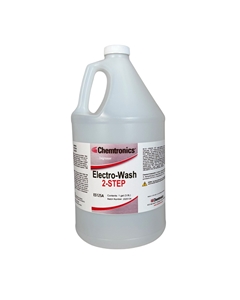Electro-Wash Two Step Degreaser
Extra-strength, nonflammable ultrasonic and immersion cleaner
Electro-Wash® Two Step is a heavy duty, nonflammable, hot or cold immersion cleaner designed to remove everything from conformal coatings to all flux residues. Simply increase the temperature of the solution, increase the dwell time of the part being cleaned, and Electro-Wash® Two Step will remove the toughest contaminants. Electro-Wash® Two Stepis easily rinsed away with water or solvent, wiped away or hot air dried, leaving the surface free of all residue.
Features & Benefits
- Cleans and brightens solder joints
- Removes heavy oil and dirt deposits from metal parts
- Removes all types of flux residues
- Removes SR, UR, AR conformal coating
- Miscible with water
- High flash point
- Low odor
- May be used in ultrasonic cleaner
- Increasing temperature increases solvency
- Leaves no residue when rinsed with Electro-Wash PX or Electro-Wash CZ
Applications
- Removes solder pastes from stencils and screens
- Removes cured conformal coatings
- Removes No-Clean residues
- Cleans reflow ovens
| TDS | |
| REGS | |
| SDS | |
| Categories |
| Shelf Life | 2 yrs After Opened |
|---|


